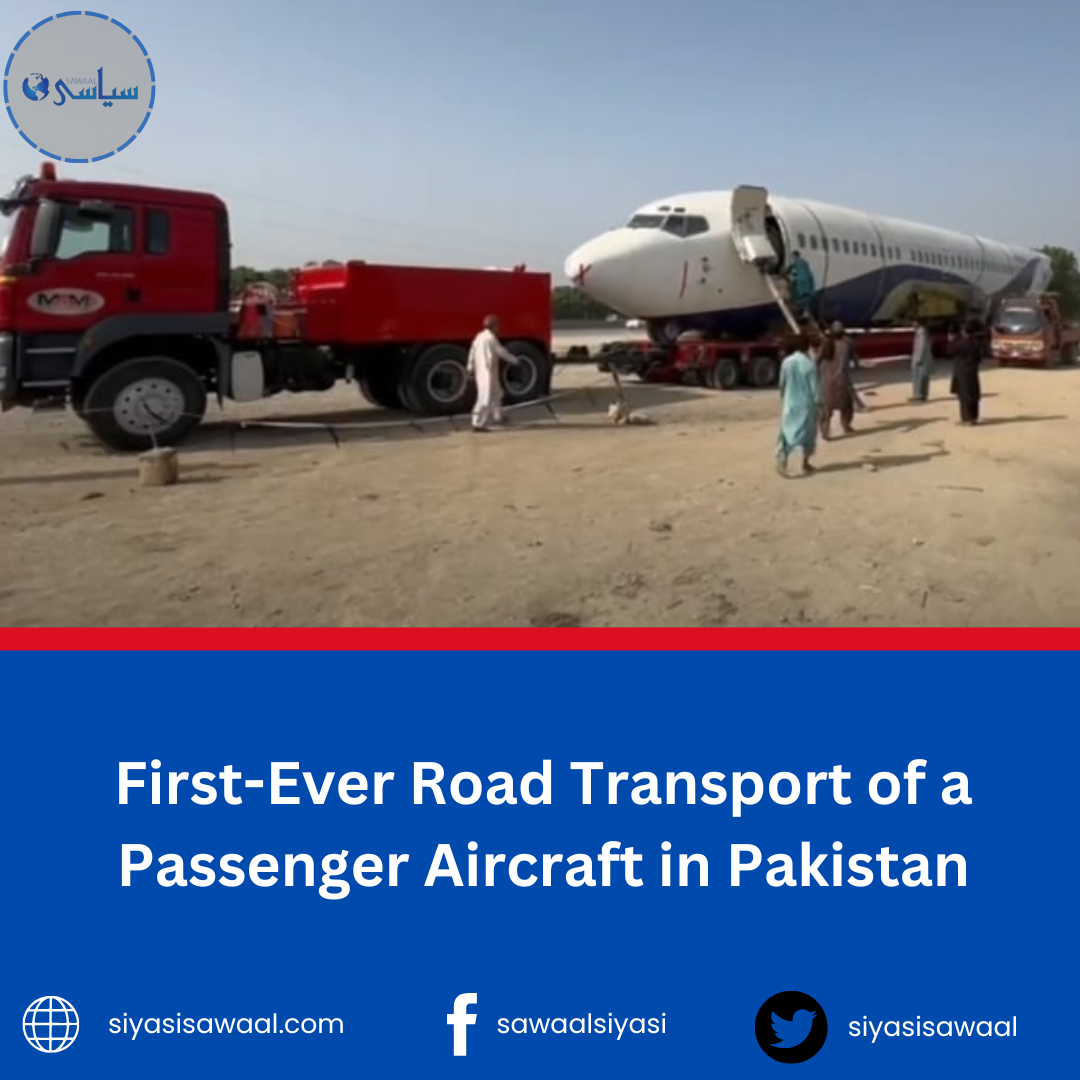For the first time in history, road transport of a passenger aircraft has been carried out in Pakistan. After an identical event which happened in Saudi Arabia when Boeing 777 aircraft were transported on the road from Jeddah to Riyadh, a major feat has been achieved in Pakistan.
In a recent high-profile event in Pakistan, a Boeing 737 aircraft was successfully transported over land to a new destination, demonstrating the country’s growing capabilities in handling large-scale logistical operations. The aircraft, which had been retired from active service, was moved from a commercial airport in Karachi to a new location where it would be repurposed for educational purposes.
New Babar Cargo Movers dispatched a retired Boeing 737 passenger aircraft from Karachi to Hyderabad via a specialized truck. This is one of those historic aviation undertakings in the country, showing its capability toward unique logistics solutions.
According to Transporter Humayun Khalid, the aircraft is 110 feet long and weighs about 40 tonnes. Carrying 240 passengers, this airplane will be utilized for training purposes at the Civil Aviation Training Institute, Hyderabad, and shall bring value in education.
First-Ever Road Transport of a Passenger Aircraft in Pakistan
It was a nocturnal transfer when shifting Boeing 737 was done from Karachi Airport to Superhighway. The motorway police made good arrangements in keeping the operation strictly protocol-based, allowing the truck to pass safely without causing any traffic congestion on the road.
The staff accompanying the aircraft in flight for a private company and personnel from Civil Aviation were there for its smooth and secure transfer. That would be a fine example of the safety and efficiency common in such unique transportation enterprises.
Recently, all eyes were on Saudi Arabia when it moved three Boeing 777 aircraft a distance of 1,000 kilometers-an action that sent social media abuzz. This development in Pakistan could unlock more avenues toward such innovative transport solutions in the aviation sector.
The unusual move involved transporting the massive aircraft on a specially designed trailer, as the plane was no longer operational and was being decommissioned. The transportation process attracted widespread attention due to the complexity and sheer scale of the task.
To achieve this, the engineers and technicians had to dismantle several parts of the aircraft, including its wings, to ensure that it could fit within the dimensions of the roadways. Special permissions and clearances were sought from the relevant authorities, as this was an unprecedented operation.
Road Transport of a Passenger Aircraft in Pakistan: Challenges
The aircraft, which weighed several hundred tons, was moved at a slow pace, requiring precise coordination between the aviation experts, local authorities, and the transport team to ensure the aircraft’s safety during the journey. Roadblocks were removed, and traffic had to be halted to facilitate the smooth passage of the plane.
The route chosen for the road transportation was carefully mapped out, taking into account factors such as road width, bridges, and overhead obstacles. The journey was completed over a period of several days, and the aircraft was transported through various parts of Karachi.
As it moved through the streets, the Boeing 737 drew crowds of curious onlookers, who marveled at the sight of such a large piece of aviation history making its way through the city’s roads. This event underscored Pakistan’s growing capabilities in managing complex logistical challenges involving large-scale equipment.
This historic road transportation of an aircraft in Pakistan also had symbolic significance, highlighting the evolution of the country’s aviation and infrastructure sectors. The event demonstrated the ability to execute highly technical operations and reflected the growing importance of logistics in modern transportation.
While the move itself was primarily for the purpose of decommissioning the aircraft, it also brought attention to the broader issues of aircraft recycling and repurposing in Pakistan’s aviation industry. This operation set a precedent for future similar endeavors and brought attention to the need for better infrastructure to support such large-scale transportation projects.
The operation involved a meticulous dismantling of the plane, removing its wings and other components to reduce its size and make it suitable for road transport. This process required careful planning and coordination between aviation experts, engineers, and local authorities, as the aircraft had to navigate narrow city streets and pass under low bridges along its route.
The road transportation of the Boeing 737 drew significant attention, as it was a rare sight to see such a large piece of aviation equipment making its way through the streets of Karachi. Special arrangements were made, including the closing of certain roads and rerouting of traffic to ensure the safe passage of the aircraft. The move was completed without any major incidents, underscoring Pakistan’s capacity to undertake such complex logistical tasks.
The aircraft is now set to serve as a teaching tool at an aviation training facility, where it will be used to help train future pilots and engineers, providing valuable hands-on experience with real-world aviation equipment. This operation marks another important milestone in Pakistan’s aviation industry, demonstrating its progress in both infrastructure development and aviation education.

Thank you I have just been searching for information approximately this topic for a while and yours is the best I have found out so far However what in regards to the bottom line Are you certain concerning the supply
I’ve been following your blog for quite some time now, and I’m continually impressed by the quality of your content. Your ability to blend information with entertainment is truly commendable.